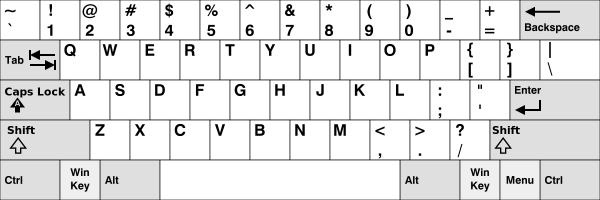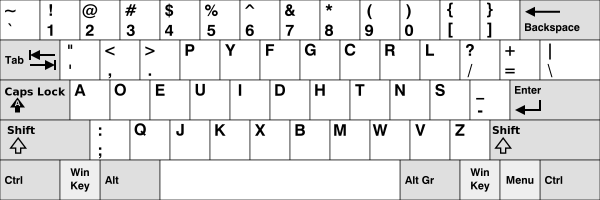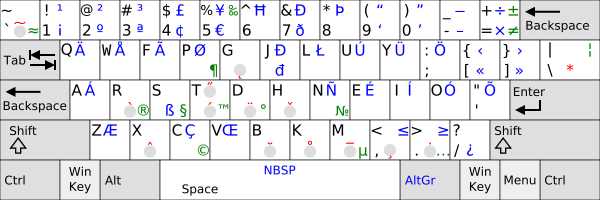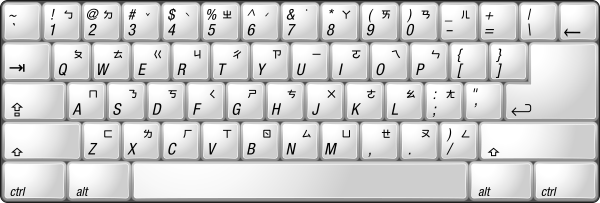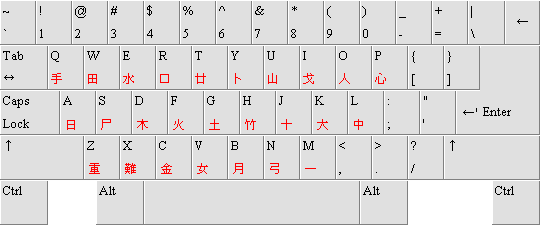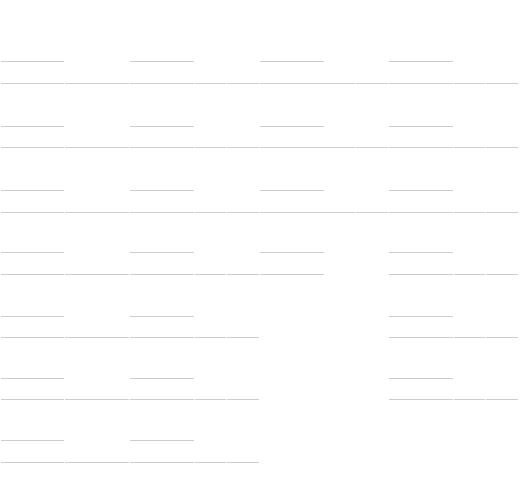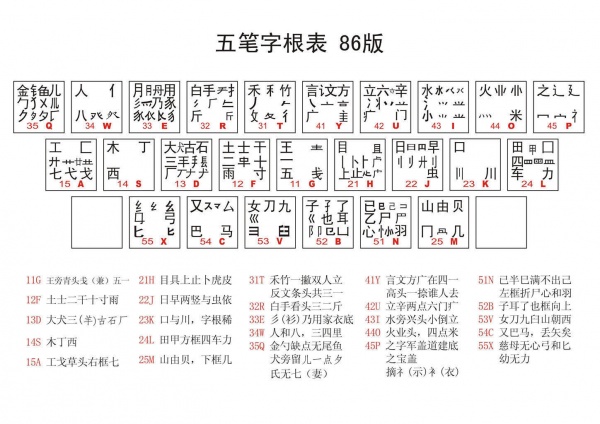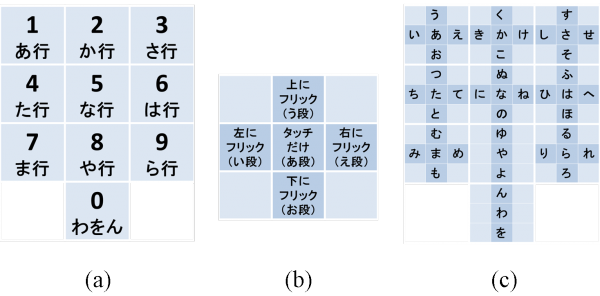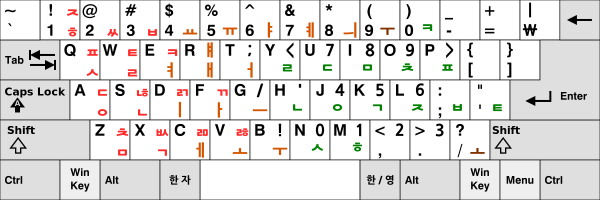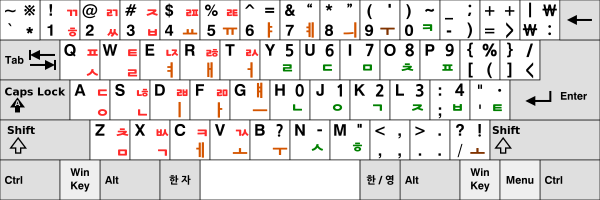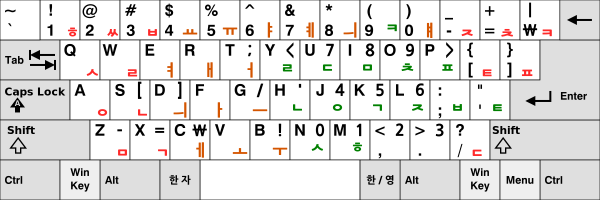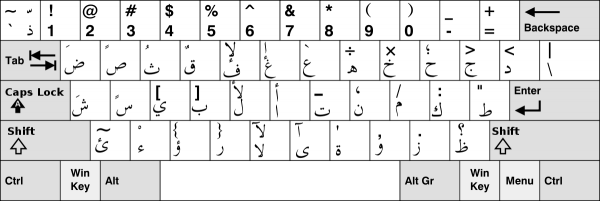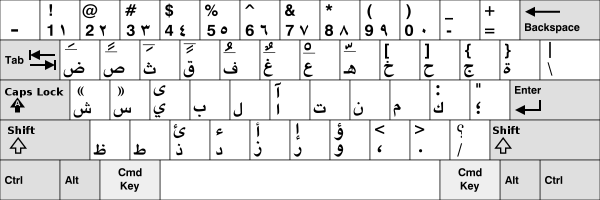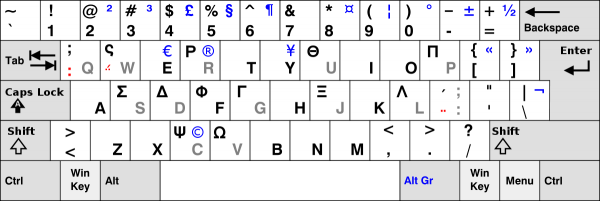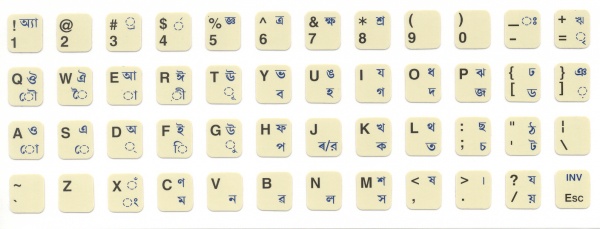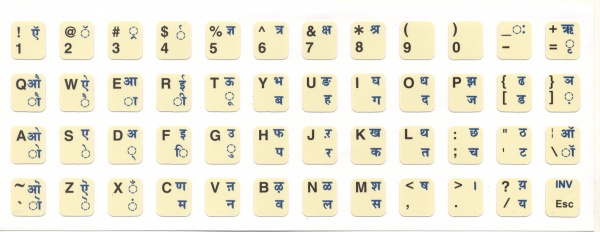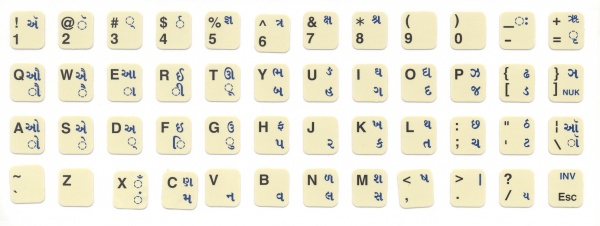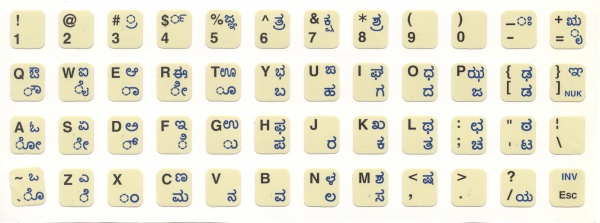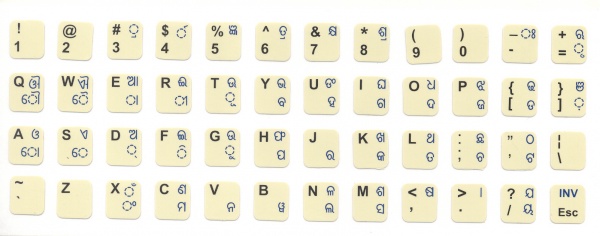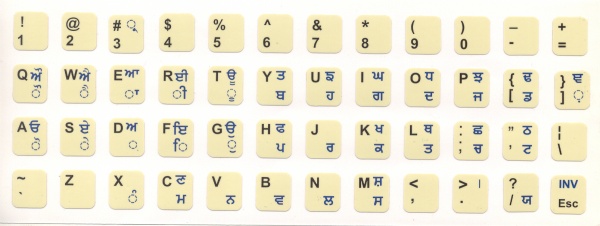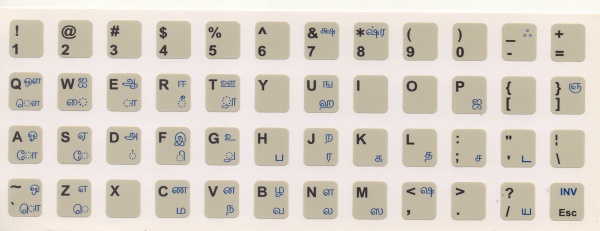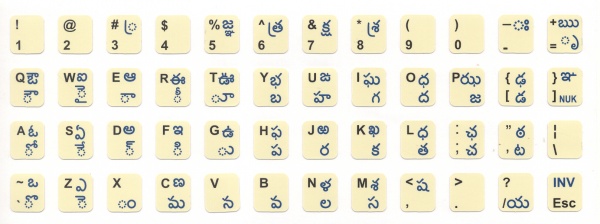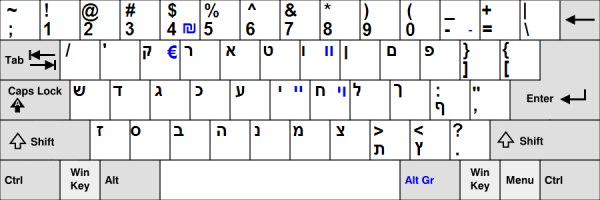Difference between revisions of "Language/Multiple-languages/Culture/Keyboards"
m (→JCUKEN) |
|||
| Line 8: | Line 8: | ||
Its main advantage is the overwhelming amount of user, most keyboard shortcuts are designed according to it. | Its main advantage is the overwhelming amount of user, most keyboard shortcuts are designed according to it. | ||
[[File:1200px-KB United States-NoAltGr.svg.png|frameless|600x600px]] | |||
=== Dvorak === | === Dvorak === | ||
| Line 13: | Line 15: | ||
Its main advantage is efficient. | Its main advantage is efficient. | ||
[[File:1200px-KB United States Dvorak.svg.png|frameless|600x600px]] | |||
==== Dvorak right hand ==== | |||
[[File:1200px-KB Dvorak Right.svg.png|frameless|600x600px]] | |||
==== Dvorak left hand ==== | |||
[[File:1200px-KB Dvorak Left.svg.png|frameless|600x600px]] | |||
=== Colemak === | === Colemak === | ||
| Line 18: | Line 28: | ||
Its main advantage is convenient. | Its main advantage is convenient. | ||
[[File:1200px-KB US-Colemak with AltGr.svg.png|frameless|600x600px]] | |||
Here is a comparison of the layouts | |||
[[File:Keyb-stat.png|frameless|923x923px]] | |||
== Cyrillic == | == Cyrillic == | ||
| Line 23: | Line 39: | ||
=== JCUKEN === | === JCUKEN === | ||
It's commonly called Windows layout, for Russian. | It's commonly called Windows layout, for Russian. | ||
[[File:KB Russian.svg.png|frameless|600x600px]] | |||
== Chinese == | == Chinese == | ||
=== Zhuyin === | === Zhuyin === | ||
It's created by the Beiyang Government in the 1910s for teaching phonetics. Later it came into | It's created by the Beiyang Government in the 1910s for teaching phonetics. Later it came into computers. | ||
Its main advantage is easy to learn. | Its main advantage is easy to learn. | ||
It's the most popular in Taiwan. | It's the most popular in Taiwan. | ||
[[File:1200px-Keyboard layout Zhuyin.svg.png|frameless|600x600px]] | |||
=== Pinyin === | === Pinyin === | ||
It's created by many linguists in the 1950s and published by Chinese Government in 1958 for teaching phonetics, being revised several times. Later it came into computers. | It's created by many linguists in the 1950s and published by Chinese Government in 1958 for teaching phonetics, being revised several times. Later it came into computers. | ||
It follows the system's keyboard, usually QWERTY. | |||
Its main advantage is easy to learn. | Its main advantage is easy to learn. | ||
| Line 41: | Line 63: | ||
=== Cangjie === | === Cangjie === | ||
It's created by Chu Bong-Foo and named by Chiang Wei-kuo in 1976. | It's created by Chu Bong-Foo and named by Chiang Wei-kuo in 1976, input by making characters up with parts. | ||
Its main advantage is efficient. | Its main advantage is efficient. | ||
| Line 47: | Line 69: | ||
It's very popular in Hong Kong and Macau. | It's very popular in Hong Kong and Macau. | ||
There are mainly two versions, version 3 and version 5 | There are mainly two versions, version 3 and version 5, the former is more popular, but the latter is more reasonable. | ||
[[File:Keyboard layout Cangjie.png|frameless|540x540px]] | |||
[[File:Cangjie-1.gif|frameless|520x520px]] | |||
=== Wubi === | === Wubi === | ||
It's created by Wang Yongmin in 1986. | It's created by Wang Yongmin in 1986, input by making characters up with parts. | ||
It main advantage is efficient. | It main advantage is efficient. | ||
There are mainly three versions, Wubi 86, Wubi 98 and Wubi New-century. The former the more popular, but the latter the more reasonable. | There are mainly three versions, Wubi 86, Wubi 98 and Wubi New-century. The former the more popular, but the latter the more reasonable. | ||
[[File:Wubi86.jpg|frameless|600x600px]] | |||
[[File:Wubi98.jpg|frameless|600x600px]] | |||
== Japanese == | == Japanese == | ||
=== Romaji === | === Romaji === | ||
Its main advantage is easy to learn. | It's created in around 1548. Later it came into computers. | ||
It follows the system's keyboard, usually QWERTY. | |||
Its main advantage is easy to learn. | |||
=== Kana === | === Kana === | ||
Its main advantage is efficient. It's the most popular in Japan. | Its main advantage is efficient. It's the most popular in Japan. | ||
[[File:1200px-KB Japanese.svg.png|frameless|600x600px]] | |||
=== Keitai input === | |||
It's for mobile phones, one can flick finger from one position to another to input. | |||
Its main advantage is efficient. It's the most popular in Japan. | |||
[[File:KeitaiInput.png|frameless|600x600px]] | |||
== Hangul == | == Hangul == | ||
| Line 72: | Line 115: | ||
It's the most popular in Korea. | It's the most popular in Korea. | ||
[[File:1200px-KB South Korea.svg.png|frameless|600x600px]] | |||
=== Sebeolsik 390 === | === Sebeolsik 390 === | ||
| Line 77: | Line 122: | ||
Its main advantage is covienient. | Its main advantage is covienient. | ||
[[File:KB Sebeolsik 390.svg.png|frameless|600x600px]] | |||
=== Sebeolsik Final === | === Sebeolsik Final === | ||
The final design of Sebeolsik. | The final design of Sebeolsik. | ||
[[File:KB Sebeolsik Flnal.svg.png|frameless|600x600px]] | |||
=== Sebeolsik Noshift === | === Sebeolsik Noshift === | ||
A variant of Sebeolsik. | A variant of Sebeolsik. | ||
[[File:KB Sebeolsik NoShift.svg.png|frameless|600x600px]] | |||
== Arabic == | == Arabic == | ||
=== IBM PC Arabic Keyboard === | |||
[[File:1200px-KB Arabic.svg.png|frameless|600x600px]] | |||
=== Mac Arabic Keyboard === | |||
[[File:1200px-KB Arabic MAC.svg.png|frameless|600x600px]] | |||
== Greek == | == Greek == | ||
[[File:1200px-KB Greek.svg.png|frameless|600x600px]] | |||
== Brahmic == | == Brahmic == | ||
=== InScript === | === InScript === | ||
It's standardized by Government of India in 1986 | It's a set of keyboards standardized by Government of India in 1986. | ||
==== Bangla ==== | |||
[[File:Bangla-Inscript-Layout.jpg|frameless|600x600px]] | |||
==== Devnagari ==== | |||
[[File:Devnagari-Inscript-Layout.jpg|frameless|600x600px]] | |||
==== Gujarati ==== | |||
[[File:Gujarati-Inscript-Layout.jpg|frameless|600x600px]] | |||
==== Kannada ==== | |||
[[File:Kannada-Inscript-Layout.jpg|frameless|600x600px]] | |||
==== Malayalam ==== | |||
[[File:Malayalam-Inscript-Layout.jpg|frameless|600x600px]] | |||
==== Oriya ==== | |||
[[File:Oriya-Inscript-Layout.jpg|frameless|600x600px]] | |||
==== Punjabi ==== | |||
[[File:Punjabi-Inscript-Layout.jpg|frameless|600x600px]] | |||
==== Tamil ==== | |||
[[File:Tamil-Inscript-Layout.jpg|frameless|600x600px]] | |||
==== Telugu ==== | |||
[[File:Telugu-Inscript-Layout.jpg|frameless|600x600px]] | |||
== Hebrew == | == Hebrew == | ||
[[File:Hebrew keyboard layout.png|frameless|600x600px]] | |||
Revision as of 17:49, 8 April 2017
Here are some suggested input methods, but not all notable ones are covered.
Latin
QWERTY
It's created in the 1870s by Christopher Latham Sholes. But it's designed for avoiding key stuck in typewriters, so there are better alternatives in computers.
Its main advantage is the overwhelming amount of user, most keyboard shortcuts are designed according to it.
Dvorak
It's created by August Dvorak and William Dealey in 1936.
Its main advantage is efficient.
Dvorak right hand
Dvorak left hand
Colemak
It's created by Shai Coleman and released in 2006.
Its main advantage is convenient.
Here is a comparison of the layouts
Cyrillic
JCUKEN
It's commonly called Windows layout, for Russian.
Chinese
Zhuyin
It's created by the Beiyang Government in the 1910s for teaching phonetics. Later it came into computers.
Its main advantage is easy to learn.
It's the most popular in Taiwan.
Pinyin
It's created by many linguists in the 1950s and published by Chinese Government in 1958 for teaching phonetics, being revised several times. Later it came into computers.
It follows the system's keyboard, usually QWERTY.
Its main advantage is easy to learn.
It's the most popular in China.
Cangjie
It's created by Chu Bong-Foo and named by Chiang Wei-kuo in 1976, input by making characters up with parts.
Its main advantage is efficient.
It's very popular in Hong Kong and Macau.
There are mainly two versions, version 3 and version 5, the former is more popular, but the latter is more reasonable.
Wubi
It's created by Wang Yongmin in 1986, input by making characters up with parts.
It main advantage is efficient.
There are mainly three versions, Wubi 86, Wubi 98 and Wubi New-century. The former the more popular, but the latter the more reasonable.
Japanese
Romaji
It's created in around 1548. Later it came into computers.
It follows the system's keyboard, usually QWERTY.
Its main advantage is easy to learn.
Kana
Its main advantage is efficient. It's the most popular in Japan.
Keitai input
It's for mobile phones, one can flick finger from one position to another to input.
Its main advantage is efficient. It's the most popular in Japan.
Hangul
Dubeolsik
It's derived from typewriter, standardized in 1982.
Its main advantage is easy to learn.
It's the most popular in Korea.
Sebeolsik 390
It's created by Kong Byung Woo and released in 1990.
Its main advantage is covienient.
Sebeolsik Final
The final design of Sebeolsik.
Sebeolsik Noshift
A variant of Sebeolsik.
Arabic
IBM PC Arabic Keyboard
Mac Arabic Keyboard
Greek
Brahmic
InScript
It's a set of keyboards standardized by Government of India in 1986.
